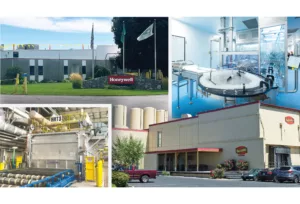
Home » Construction loan cautious
Construction loan cautious
Banks ask project owners to put up more funding, secure higher occupancy

January 27, 2011
Banks have money to lend for commercial projects, but tough loan requirements are making it harder for developers and project owners to get them off the ground, finance and development market insiders here say.
The lending environment is much more cautious than it was in years leading into the recession, even though some banks are "flush with liquidity," says Randall L. Fewel, president and CEO of Spokane-based Inland Northwest Bank.
"INB has lots of money to lend, but the game has changed," Fewel says. "Developers are going to have to put more cash in, and risk is going to have to be mitigated strongly."
Dick Vandervert, who heads Vandervert Construction Inc. and Vandervert Developments LLC, both of Spokane, also says project owners have had to put up a bigger share of construction costs lately.
"Banks used to lend up to 80 percent of a project's value," he says. "They've reduced that to 65 to 70 percent."
The minimum-equity requirement slows a lot of developers who don't have the cash reserves needed to start a project, Vandervert says, adding, "A lot of projects don't get done, and we get less competition."
Barry Baker, president and CEO of Baker Construction & Development Inc., of Spokane, says the loan-to-value percentage is based on appraised value of comparable completed projects, not actual construction cost.
"Some appraisals are coming in lower than the cost to build projects," Baker says.
In such cases, project owners would have to fund all of the cost above the appraised value in addition to the equity required to obtain the bank loan, he says.
"I've seen great projects with good, strong customers that developers weren't able to build," Baker says.
Recent lending policies aren't entirely new, says Paula Smyly, senior vice president and professional banking manager at Coeur d'Alene-based Mountain West Bank.
"Years ago, a reasonable loan-to-value ratio for a commercial project was 65 percent to 75 percent," Smyly says. When the economy grew rapidly during part of the last decade, however, "Banks all over the country were making exceptions, and a loan-to-value of 80 percent became the rule rather than the exception," she says.
As the recession took its toll, lenders returned to their earlier standards, Smyly says.
"Veteran bankers who have been through one or more economic cycles are relying on tried-and-true methods of underwriting—no more relaxing of standard, prudent underwriting," she says.
Lenders also are emphasizing relationship banking in which the owner of a commercial project is one lender's customer rather than the customer of multiple lenders, Smyly says.
"A bank is unable to get its arms around the global picture of a customer if it doesn't know what the customer is doing with five other banks," she says.
Lenders have heightened their scrutiny of customers' projects, including their tenants, locations, and competition, Smyly says.
"It doesn't bode well for everyone to build beautiful Class A office space if all the tenants are doing is playing musical chairs with landlords," she says. "If the area doesn't need additional Class A office space, you shouldn't do much speculation."
Mountain West's commercial construction loans have been declining every year since 2006, Smyly says. That, however, has less to do with changes in credit policy than with an overall drop in demand for new commercial space, she asserts.
"For us, the decline is mostly because in the construction heyday, most of our owner-occupied building customers wanted to beat increases in real estate and construction prices, which had been rising," Smyly says.
Today, those customers either have built already, or they're holding off until the economy improves, she says.
Fewel also says there's not much demand for the money that's available. Although winter traditionally is the slow season for construction, the bank usually receives a flurry of construction loan requests in January, he says.
"We're not seeing those requests," Fewel says. "We would like to, because we've got a lot of cash that we would much prefer to put out in loans instead of bonds."
Both Fewel and Smyly say lenders are showing a preference for commercial projects that owners plan to occupy rather than lease out entirely.
"We're dealing with the owner and not just the developer," Smyly says. "If the owner has a builder or developer, that becomes part of the deal."
For developments that won't be occupied by the owners, banks are requiring pre-lease commitments for up to 80 percent of the proposed space, and that also is slowing some projects, Vandervert says.
"We could get by with 55 percent to 60 percent before the recession," he says. "A lot of new projects are taking two to three times longer to lease up than they used to."
That said, some projects meet the stricter standards. Baker Construction recently negotiated a loan financed by U.S. Bank to develop a $2 million, 12,000-square-foot medical center in Liberty Lake that will be fully leased by Spokane-based Rockwood Clinic, Baker says. The contractor expects to break ground in a couple of weeks and complete the project by early summer.
Fewel says banks are being pressured to avoid lending for nonowner-occupied projects.
"Bank examiners are very negative about nonowner-occupied real estate, and many banks have pulled back from speculative construction lending to appease regulators," he says.
Fewel says he expects to see such pressure begin to let up in 2012.
"The construction industry is a very important part of the economy," he says. "If banks are told not to lend in this nonowner-occupied area, it's going to make it tougher to rebound from the recession."
Latest News
Related Articles



_web.webp?t=1764835652)
